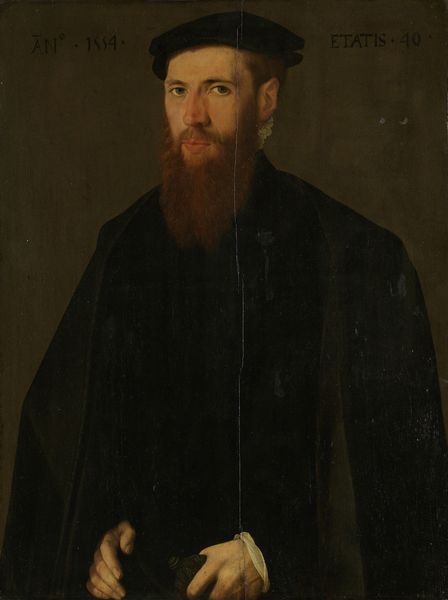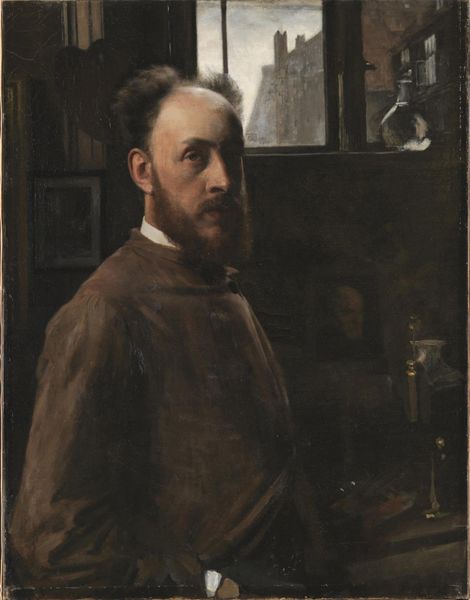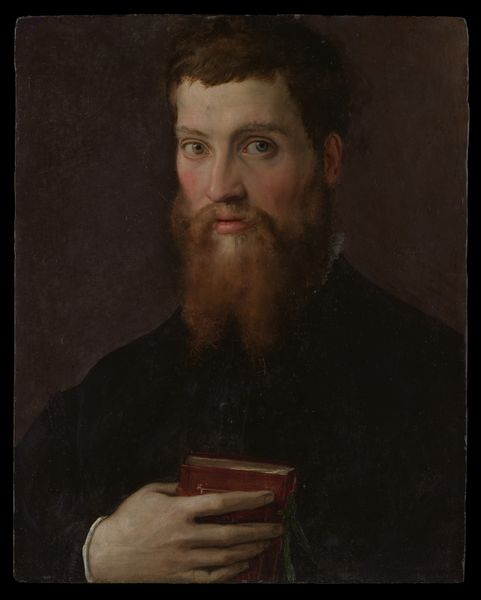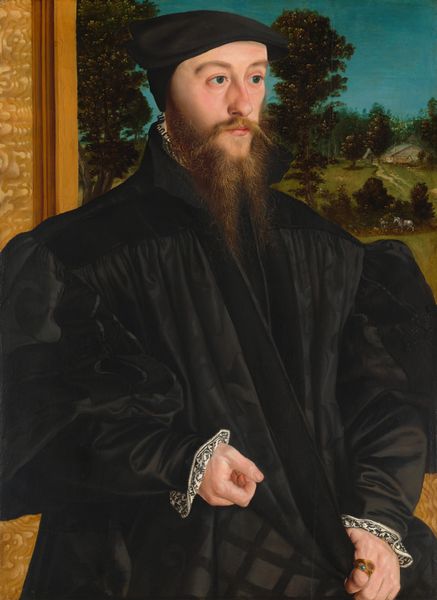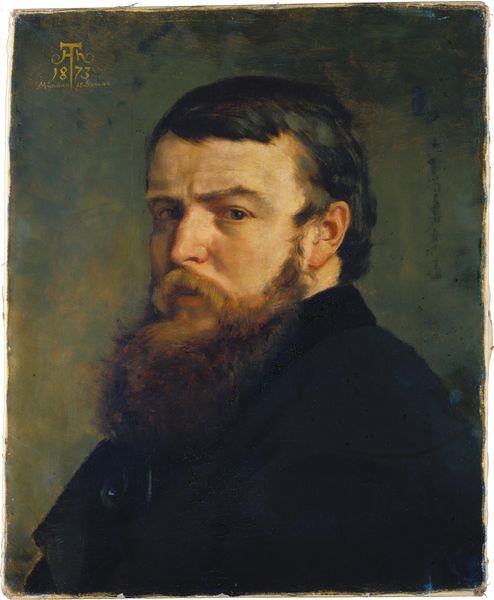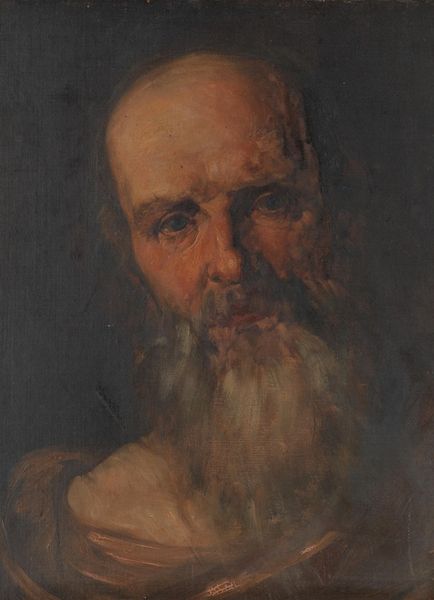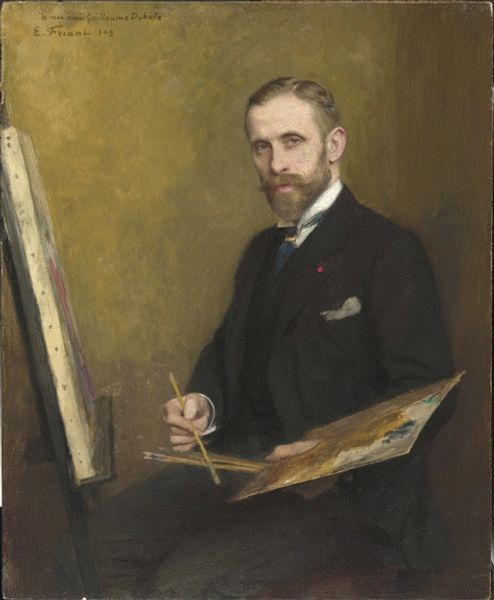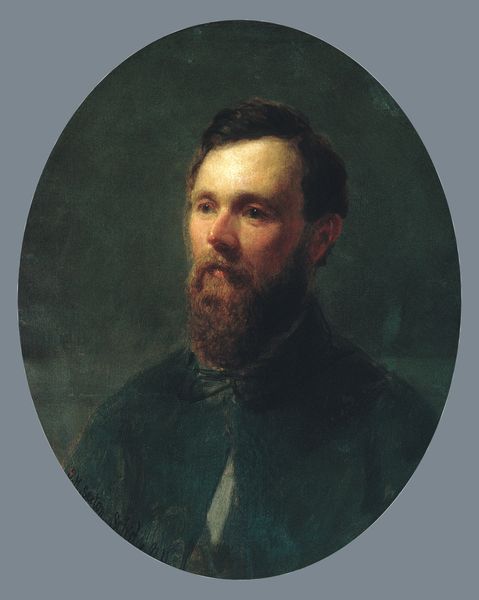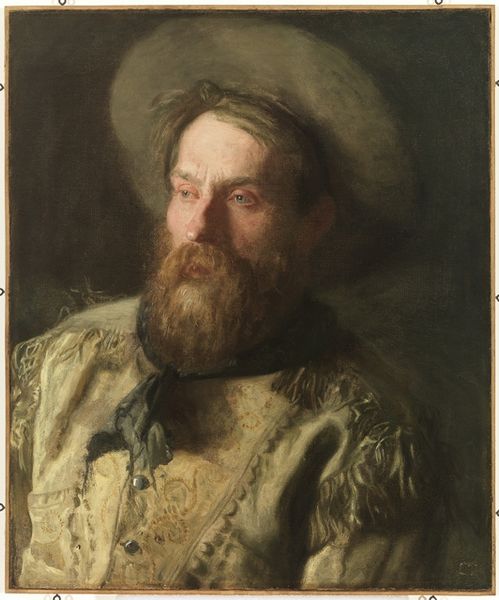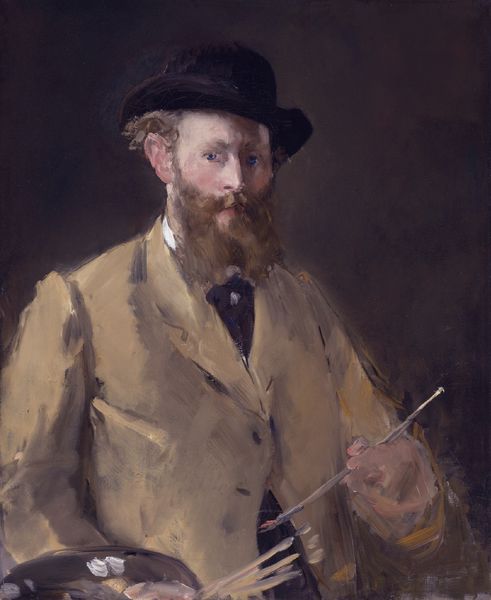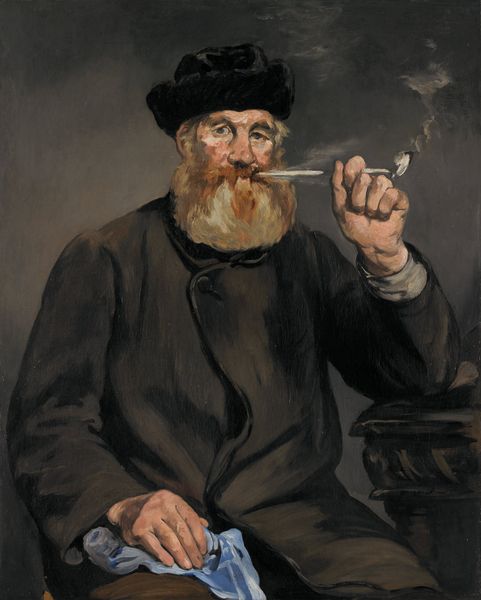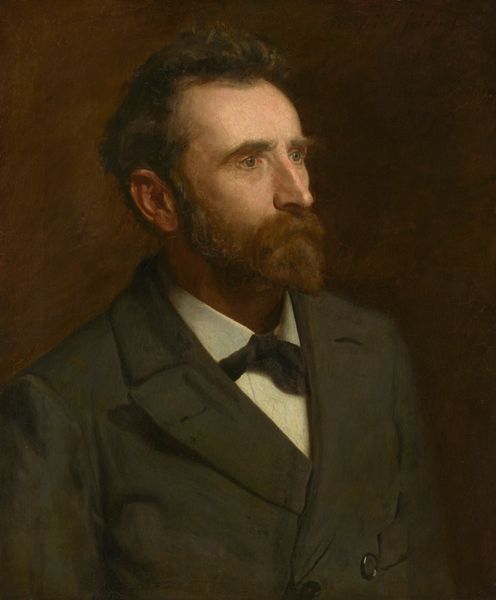
painting, oil-paint
#
portrait
#
painting
#
oil-paint
#
history-painting
#
academic-art
#
portrait art
#
realism
Copyright: Public domain
Curator: What strikes me immediately about this image is its overwhelming somberness. It feels deeply, palpably sad. Editor: Well, let’s dive into what we’re looking at. This is Lawrence Alma-Tadema’s "Dr. Washington Epps, My Doctor," painted in 1885. Alma-Tadema, while now perhaps lesser known, was a hugely successful painter of the Victorian era. This portrait is currently housed at the Carnegie Museum of Art in Pittsburgh. Curator: So we see a bearded man, presumably the doctor, kneeling beside a bed. He’s impeccably dressed in a dark suit. The light is soft, almost mournful, focusing on his face and the intertwined hands of the two figures. He's also holding what seems to be a pocket watch. The hands, juxtaposed like that...there's such a poignant contrast there, almost as if life and mortality were shaking hands. It projects a sense of profound loss or, at the very least, impending grief. The face bears so much emotional pain. Editor: The painting has been called academic or realist but I think that it's an ideal example of Victorian sentimentality, but that emotional register also gave visual language a public function and that created and validated institutions of health, like the doctor. Dr. Epps looks really dedicated in this piece and one can easily get that emotional pain you talk about as the sign of professional distress. But it must be thought how medicine, as professional service, looked at the late XIX century, after scientific revolutions that deeply altered perceptions and roles. It must be pointed that this devotion here is something new and tied to the image of the trusted physician. Curator: Absolutely. It taps into very potent cultural symbols—the dedicated doctor, the vulnerability of illness. I'm very curious what the function of that timepiece would be and what's its meaning in relation to the act represented in the painting. The control, a power act implicit on medicine itself or maybe a time window before the inevitable arrives? It suggests a temporal aspect that enriches the work a lot. Editor: The clock becomes an incredibly relevant symbol and can carry a myriad of meanings that all touch each other. The fragility of life is central to what the artist represents, for sure. I think exploring the doctor-patient dynamic within that social and historical framework would allow for rich reflections. Curator: It’s a piece that continues to resonate because of that capacity to evoke something deeply human. A story captured, painted forever on a surface that defies the pass of time, but carries the idea of it...amazing. Editor: Indeed. An artwork that uses symbolism, in service of public and cultural discourse.
Comments
No comments
Be the first to comment and join the conversation on the ultimate creative platform.
